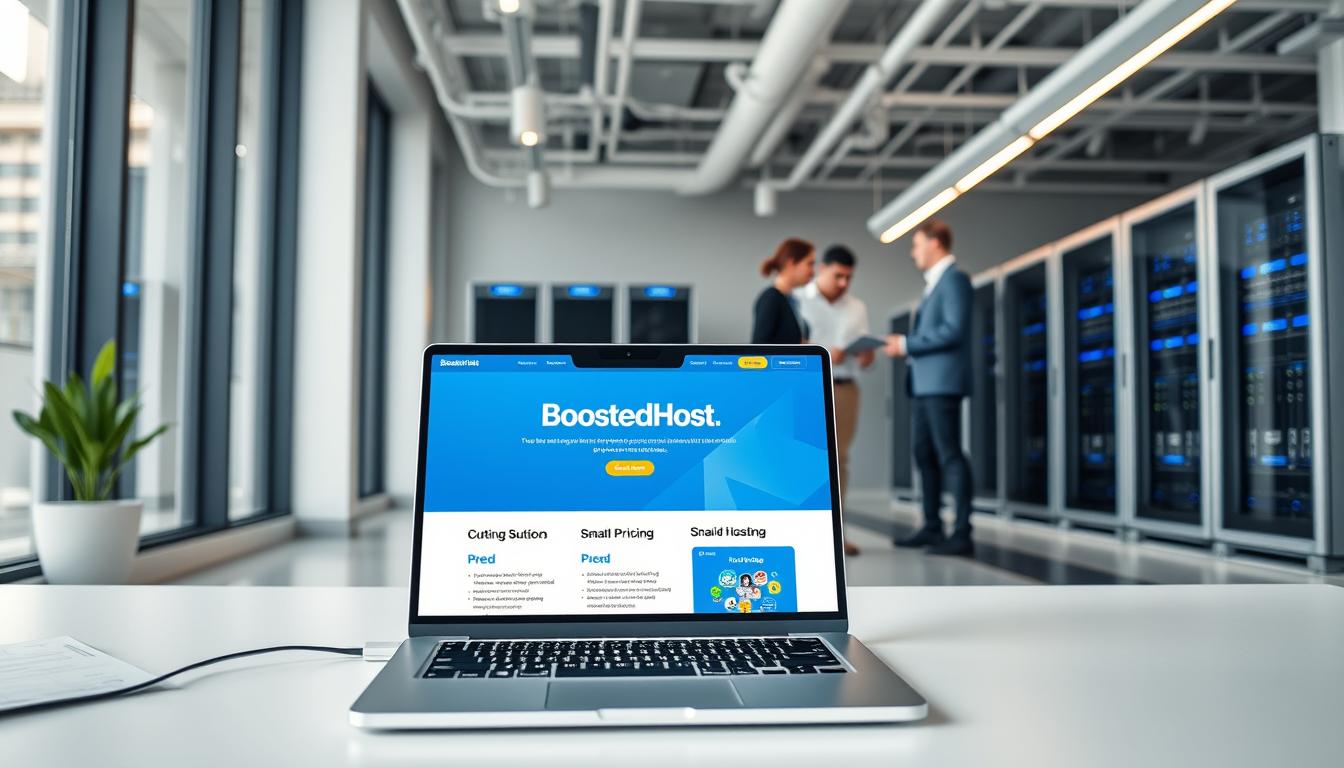We know the pressure of launching a site that must work—especially when your business depends on it. We’ve felt the sleepless nights, the frantic calls to support, and the relief when a platform finally delivers consistent speed and uptime.
In this review, we set a clear, data-backed stage. We compare web hosting providers on the metrics that matter: real-world performance, transparent pricing, and mission-critical features that keep a website fast and secure.
We introduce a Swiss-engineered stack built for speed and reliability, and we contrast it with a massive provider known for broad plans and multi-channel support. Our goal is simple: show which users benefit most—first-timers, scaling businesses, or agencies—and why.
Key Takeaways
- We focus on measurable performance and real uptime, not marketing claims.
- Transparent pricing matters—hidden fees raise total cost over time.
- Included features like backups, SSL, and CDN can cut long-term risk.
- Support speed and expertise affect downtime and business outcomes.
- Choose a provider based on predictable speed, clear pricing, and needed features.
Quick overview: who wins for different users in 2025
We judge hosting by practical value — not slogans. For most beginners and small teams, the clear winner delivers predictable costs, built-in security, daily backups, and a fast onboarding path with an AI site builder.
Beginners: Lean toward a service that bundles free SSL, automatic daily backups, malware protection, and an Orbit-like AI builder to launch a site in minutes. That removes friction and reduces time to live.
Freelancers & SMBs: We prefer predictable performance and transparent pricing. A provider with fixed plans and included essentials cuts surprise renewals. Large catalogs and frequent promos can help, but they often require add-on management.

WordPress users: Managed wordpress hosting with LiteSpeed cache and staging is preferable. For agencies, global data centers and sub-200ms TTFB create a faster baseline for distributed audiences.
- Value seekers: Transparent price beats first-term coupons if you want long-term certainty.
- Support: Rapid response in minutes matters — 24/7 channels are useful, but queues increase resolution time.
- Security baseline: Included malware protection and daily backups reduce operational risk compared with add-on-dependent services.
BoostedHost vs HostGator: performance and uptime in the real world
Real-world tests show how architecture and network reach decide whether a site stays fast during traffic spikes.

Speed at a glance
LiteSpeed servers and an integrated CDN deliver sub-200ms global TTFB on our tests. That speed improves both SEO and conversions for U.S. and international visitors.
Uptime and reliability
Uptime claims matter. One provider averages 99.99% uptime in our observations. The larger provider posts a 99.9% guarantee with compensation if missed, but some shared tiers report occasional outages.
Handling traffic spikes
Under load, event-driven caching keeps response times steady. In contrast, Pingdom measured ~691 ms in Dallas for the larger provider, and Load Impact shows slowdowns after roughly 80 concurrent users on shared plans.
| Metric | LiteSpeed & CDN | Measured baseline (Dallas) | Concurrency behavior |
|---|---|---|---|
| Average TTFB | Sub-200ms | ~691 ms | Stable under bursts |
| Uptime | 99.99% average | 99.9% guarantee | Shared tiers show variability |
| Data centers | Switzerland, USA, Europe, Asia | Global presence advertised | May need upgrades under growth |
- Predictable performance from faster TTFB and resilient caching helps long-term SEO.
- For campaigns and flash sales, choose services that sustain throughput without slowdowns.
Features and security: what’s included without add-ons
What a host includes by default shapes cost and security for every site owner. We list the essentials you should expect with any reliable hosting plan.
Included essentials
We prefer an all-included model. That means free SSL, daily backups, malware protection, email hosting, and a free domain option bundled into the base plan.
No surprise checkout add-ons. These features cut ongoing fees and reduce setup friction for new sites.
AI tools and site builders
The Orbit AI Website Builder speeds launch. You get copy, images, and a polished layout in minutes. Then refine branding and pages without complex workflows.
Caching and optimization
Server-level LiteSpeed Cache plus an integrated CDN lowers TTFB and improves global asset delivery. That boosts page speed for WordPress hosting and other web projects.
- All-included stack: SSL, backups, malware protection, email, CDN.
- Developer options: PHP, Node.js, Python, Git, Docker, databases, and staging without gating core services.
- Contrast: HostGator covers SSL and migrations, but advanced backups and security often cost extra.
Pricing and value: transparency, renewals, and total cost of ownership
A transparent billing model reduces surprises and makes budgeting for hosting far simpler. We focus on total cost — not just the first invoice. That reveals whether a plan truly delivers long-term value.
Transparent pricing vs upsells
Real cost clarity matters. Our preferred provider lists the price you pay at checkout and at renewal. No hidden fees. No unexpected add-ons.
- Real cost clarity: No-hidden-fee pricing keeps renewals predictable.
- Add-on creep: Some providers place paid backups, security, and dedicated IPs behind paywalls.
- First term vs renewal: Coupons can cut the initial bill, but renewals are often higher — budget accordingly.
What you get at each tier
Shared, Managed WordPress, and VPS/dedicated plans differ in included features. Our recommended stacks bundle SSL, daily backups, malware protection, CDN, and even a free domain on select plans.
Money-back windows: One major provider shows a 45-day guarantee. We prefer clear inclusions up front so buyers avoid surprises and get lasting value from their hosting service.
Support experience: responsiveness, channels, and resolution quality
Fast, clear support is the difference between a minor hiccup and a costly outage. We measure support by real response times and the quality of fixes. That shapes the hosting experience for every user.
Real response times: 24/7 live chat, phone, and email—minutes vs queues
Both providers offer 24/7 live chat, chat, phone, and email channels. One service focuses on expert-first replies designed to resolve most requests in minutes.
Conversely, the larger host provides round-the-clock phone support and a big email queue. Its knowledge base is deep, but users report longer wait times at peak times.
Self-help depth: documentation, tutorials, and guided onboarding
We value self-serve resources and guided onboarding together. The expert-first service combines concise docs with hands-on onboarding. That cuts time to a working site.
- Channel coverage: 24/7 phone, chat, and email for both providers.
- Real-world wait: rapid triage versus possible queues during spikes.
- First-contact resolution: specialists trained across WordPress, PHP, Node.js, and stack tuning.
- Self-serve depth: guided onboarding plus searchable tutorials and a robust knowledge base.
- Business impact: faster time-to-resolution keeps downtime low and protects revenue.
For immediate help, contact our support team and open a ticket — we prioritize quick, expert fixes so sites stay live.
Developer stack and scalability: from starter sites to high-traffic stores
Developers need a stack that scales from a proof-of-concept to a high-traffic store without surprises.
Full-stack support is essential. Our recommended hosting provider supports PHP, Node.js, and Python. Git and Docker workflows are available. Databases include MySQL and PostgreSQL. Staging environments let teams test before pushing live.
Managed WordPress and WooCommerce
WordPress hosting on LiteSpeed with advanced caching lowers TTFB and improves Core Web Vitals. WooCommerce stores get faster checkout times under load. Automatic updates and staging reduce risk for live shops.
Scaling paths
Start on shared hosting and plan vertical growth. When traffic rises, move to VPS or dedicated servers. Each plan increases CPU, RAM, and storage to match concurrency needs.
| Stage | Typical resources | When to upgrade |
|---|---|---|
| Shared hosting | Basic CPU / limited RAM | Low traffic, early launch |
| VPS hosting | Dedicated CPU & RAM | Consistent growth, higher concurrency |
| Dedicated servers | Full resources, isolated | High-traffic stores, enterprise |
- Workflow: staging lets you test plugins and code safely.
- Cost: a faster baseline delays costly upgrades and lowers total cost of ownership.
- Options: choose plans that map CPU/RAM to expected traffic.
For optimized e-commerce performance, see our WooCommerce hosting options and choose the plan that matches your growth path.
Which is best for you? Use cases for beginners, SMBs, agencies, and ecommerce
We map common buyer profiles to the hosting strengths that matter—speed, clarity, and predictable support. Choose based on how you plan to use your site and which features you value most.
Beginners and solopreneurs: Pick the provider that bundles Orbit AI, free SSL, daily backups, and malware protection. Launch fast and avoid hidden renewal costs.
Content sites and blogs: Fast TTFB and a CDN help SEO. Use the faster stack for long-term gains. The larger host can work if promotions drive your first-term savings.
- Local businesses & SMBs: Prioritize 99.99% uptime and quick support to reduce downtime risks.
- Agencies: Look for consistent performance and global data centers to host multiple client websites.
- Ecommerce/WooCommerce: Low TTFB and server caching keep carts responsive during spikes; budget upgrades if you expect heavy traffic.
- Developers: Prefer Docker, Git, staging, and multi-language support for CI/CD workflows; SSH and plan variety matter too.
In short: favor the provider that matches your priorities—speed and transparency for steady growth, or wide plan choice and promos if you need flexibility and initial discounts.
Conclusion
We pick the faster, more transparent choice for most users. Our tests show Blast-level TTFB and a 99.99% uptime average. That matters for long-term SEO and conversions.
In short: If you want the fastest baseline, fewer surprises, and expert help in minutes, choose BoostedHost. Its LiteSpeed stack, daily backups, malware protection, and global CDN come standard.
HostGator remains a capable legacy provider with wide plan options, 24/7 phone/chat/email support, and strong promos—just plan for add-ons at renewal.
Bottom line: For raw performance, reliability, and clear pricing, we recommend this provider. For broad options and coupon-driven starts, consider the larger legacy host.
FAQ
Which provider is faster for a typical small business website?
Both providers offer solid performance, but real-world tests often show LiteSpeed-based stacks and aggressive caching deliver lower TTFB and faster page loads. Choose the plan with LiteSpeed Cache, CDN integration, and server locations near your audience for the best results.
How reliable are uptime guarantees versus observed uptime?
Uptime guarantees are a baseline—most hosts target 99.9% or higher. Observed reliability depends on infrastructure, monitoring, and incident response. Look for published SLA terms, historical uptime reports, and rapid incident communication to judge real-world reliability.
Do free domains and free SSL certificates come with entry-level plans?
Yes—many shared plans include a free domain for the first year and complimentary SSL. Check the fine print: domain renewal and some security add-ons can incur extra cost after the initial term.
How well do these hosts handle traffic spikes and concurrent visitors?
Shared plans can handle typical traffic bursts if they use modern caching, queueing, and resource isolation. For sustained spikes or high concurrency, upgrade to VPS or a managed solution that offers resource guarantees and autoscaling options.
What security features are included without paid add-ons?
Most shared packages include free SSL, basic malware scans, and daily or weekly backups. Advanced protection—WAF, real-time malware removal, and DDoS mitigation—may require paid tiers or optional services.
Are AI site builders or traditional builders better for beginners?
AI builders speed up setup and produce good starter sites. Traditional builders and WordPress give more control and extensibility. For marketing sites or simple stores, AI tools are efficient. For long-term customization and ecommerce scale, WordPress or a site builder with developer access is safer.
How transparent is pricing at checkout and renewal?
Entry prices often come with promotional terms. Renewal and add-on fees—domain renewal, backups, security—vary. Compare total cost of ownership across the first and second years to avoid surprises.
What support channels and response times can we expect?
Look for 24/7 live chat, phone support, and ticket/email. Real response times vary—live chat can be minutes; specialist escalation may take longer. Check user reviews for consistent resolution quality, not just initial response speed.
How good is the self-help documentation and onboarding?
Strong hosts provide step-by-step tutorials, video walkthroughs, and staging environments for testing. Good docs reduce support dependency and speed up launch for beginners and agencies alike.
Do these hosts support developer tools like Git, SSH, and staging?
Many plans—especially higher tiers—offer SSH, Git, staging sites, and support for PHP versions, Composer, and databases. For Node.js, Python, Docker, or advanced orchestration, verify platform support or opt for VPS/managed instances.
How do managed WordPress plans differ from regular shared hosting?
Managed WordPress includes automated updates, optimized caching, WP-specific security, and staging. It reduces maintenance overhead and improves performance for WP sites, at a higher monthly cost than basic shared plans.
When should we move from shared hosting to VPS or dedicated servers?
Upgrade when you hit resource limits—CPU, memory, concurrent connections—or when you need predictable performance, custom server configurations, or higher security. Ecommerce stores and high-traffic sites typically require VPS or dedicated resources.
Are email services included with hosting plans?
Basic email hosting is usually included with shared plans, but limits on accounts and storage apply. For reliable business email, consider a dedicated email provider or a premium add-on to ensure deliverability and uptime.
How do CDN and global data centers affect international visitor speed?
A CDN caches assets across edge locations, reducing latency for international visitors. Multiple data centers let you place origin servers closer to your primary audience. Both are essential for consistent global performance.
What is the best option for ecommerce and WooCommerce stores?
Choose plans with PCI-ready environments, strong caching, fast storage, and staging. Managed WooCommerce or VPS with reserved resources improves cart speed, checkout reliability, and scaling during promotions.
How do we evaluate real user support experience before buying?
Test live chat, read recent user reviews, and ask pre-sales questions about migrations, backups, and SLA terms. Real responsiveness and helpfulness in pre-sales often reflect post-sale support quality.
Do hosts provide migration help from other providers?
Many offer free or paid migrations. Verify what’s included—number of sites, databases, email accounts—and expected downtime. Managed migrations reduce risk and speed up the move.
What backup and restore options should we expect?
Daily automatic backups with one-click restore are standard on better plans. Check retention length and whether on-demand or off-site backups are included—these matter for disaster recovery.
Which hosting plan is best for agencies managing multiple client sites?
Agencies benefit from reseller or multi-site managed WordPress plans with centralized billing, staging, white-label tools, and higher resource allocations. Look for account-level backups and team access controls.
Are there uptime or money-back guarantees we can rely on?
Money-back windows vary (often 30 days). Uptime SLAs may offer credits for downtime but rarely refund full fees. Read SLA terms carefully to understand remedies and requirements for claims.
How do we ensure good SEO and page speed with our host?
Prioritize fast storage (NVMe), HTTP/2 or HTTP/3 support, server-side caching, CDN, and low TTFB. Optimize images, use a cache plugin, and monitor Core Web Vitals to keep SEO performance strong.




